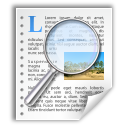Free readability tools to check for Reading Levels, Reading Assessment, and Reading Grade Levels.
[ HOME ] Check Your Readability: Check Text Readability NOW  Free Readability Calculators Learn about Readability Formulas: Dale-Chall Formula Flesch Reading Formula The Fry Graph SPACHE Formula [ View All ] Readability Help: [ View All Articles] Writing Tips: [ View All Articles] English Writing Products: StyleWriter software Site Map About Us Contact Us Write for Us |
How to Make Your Press Release Reader-Friendly Writing and formatting a press release is easy. If you format your press release according to "industry standards" and include all the essential information, then reporters and editors will likely read your press release.
Follow these formatting rules to create a reader-friendly press release: Rule # 1: Use mixed case. NEVER SUBMIT A PRESS RELEASE IN ALL UPPER CASE LETTERS. As you can see, it’s difficult to read and marks you as an amateur writer. Rule # 2: Adhere to all rules of grammar and style. Grammar mistakes and sloppy style use affect your credibility. PR distributors will reject your press release with excessive errors. Polish your writing with a grammar and style checker, such as StyleWriter. Rule # 3: Trash the HTML. When sending your press release to online media, do not embed HTML or other markup languages in it. Such computer-coded formatting will negatively impact the readability of your press release. Use a free readability formulas tester at www.ReadabilityFormulas.com to ensure you’ve written your press release between a 5th and 8th grade reading-level. Rule # 4: Use more than one paragraph. If you can say everything in only a few sentences, then your press release is probably not newsworthy. Some experts may tell you that you should never write a press release longer than one page. I have found that you should write a press release as long as it takes to tell your story. If that means one and a-half or two pages, then that’s how long it should be. Do your best to keep it concise, but don’t remove important information just to make it fit on one page. Rule # 5: Include a summary paragraph for online submissions. Some online news services want a one-page summary of your press release. This is because some distribution points only receive your headline, summary and a link to your press release. This is not necessary with print, television or radio media. Rule # 6: Write your press release on a word processor instead of composing it online. When you’ve finished writing it, print it out, and proofread it. Rewrite, edit, and proofread again, until you've got it exactly how you want it, and you have no mistakes. Because most people have trouble proofreading their own writing, ask a colleague to proofread it for you. Rule # 7: Do not include your e-mail address in the body of your release -- especially if you submit your press release online, or publish your press release on your website or blog. You can include your e-mail address in the “Contact Us” section; if it goes online, prepare yourself for spam, since it’s going into public domain. Most online media services provide a “spam-free” place for your e-mail address, and most of your local media prefer your telephone number. PRESS RELEASE TEMPLATE Use this basic press release template to format your press release: Step # 1: At the top of the page, on your company letterhead, write the words "PRESS RELEASE" in all capital letters. Center and bold it. Step # 2: Hit the Enter-key twice, so you go down two lines. On the left hand side of the page, write the release date. If it's for immediate release, then write "FOR IMMEDIATE RELEASE" in bold-faced CAPS. Step # 3: On the same line, but to the far right, write the words "CONTACT INFORMATION" or “CONTACT INFO.” in bold-faced capital letters. Go down to the next line, and list the contact person and his/her phone number. TIP: Sometimes it’s a good idea to include two contact people and two phone numbers -- for example, the office number and cell phone number. You can also include your e-mail address. Step # 4: Hit the Enter-key twice again, and type in your headline. (Center and bold-face your headline, but not in all CAPS). Write a headline that is short, snappy and relevant. You want to grab the reader's attention. Step # 5: Go down two spaces again. This is the body of your press release. You should double-space your text and use a 12 point font, such as Times New Roman or Arial. Leave plenty of white space in your press release -- use at least one to two inch margins around your page. Step # 6: In your first paragraph, provide the readers with enough basic information to keep them reading. The body of your press release should answer the five "W" questions -- Who, What, When, Where and Why. Because you've only got a few sentences, make every word count. Step # 7: In the second paragraph, answer the "So What" question. Explain why readers might find this information interesting, and why they should care about it. The second paragraph is an ideal place to include a quote, or an emotional tidbit, to add human interest to your story. Step # 8: In the third (and often final) paragraph, answer any questions the reporter or journalist might have about your story. Here is where you can include information about your company, or any technical explanations. Step # 9: Make your press release long enough to say what you need to say. If it goes beyond one page, then include the word “MORE” under the last line on the first page. Capitalize and bold-face it. Then on the second page, on the top right hand side of the page, write "Page 2." On the line under that, write the title of your press release again. Step # 10: Continue where you left off. When you finish your press release, center these symbols under the last line, "###" (without the quotation marks). This lets the reader know you're done. That's all there is to it. You now have a reader-friendly press release. About Readability >> READABILITY FORMULAS New Dale-Chall - Flesch Reading Ease - Flesch Grade Level - Fry Graph -Gunning FOG - Powers-Sumner- Kearl - SMOG - FORCAST - Spache  StyleWriter software: use it to write better content! Download your free trial! |
|
|
||